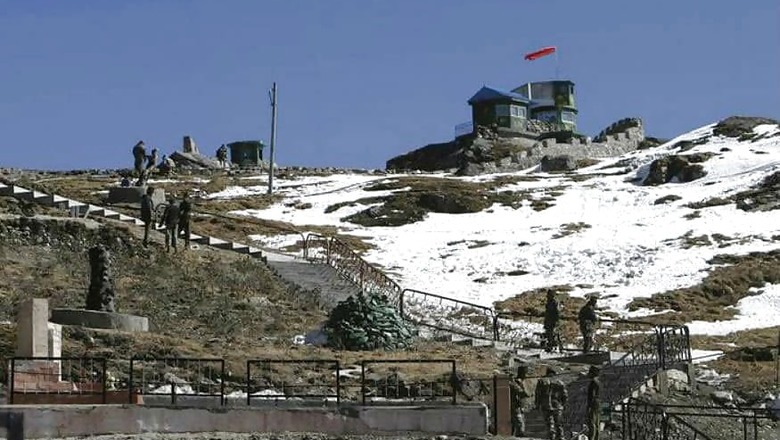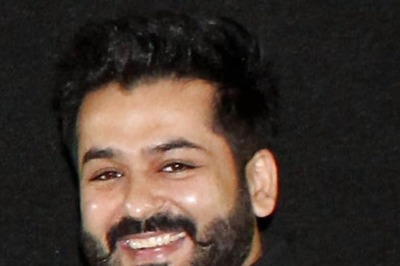
views
Deng Xiaoping wanted a peaceful rise for which he evolved a 24 Character Strategy that revolved around hiding ones capability, maintaining low profile and never claiming leadership.
On the contrary, Xi Jinping in 2013 announced a One Character Strategy and that was to ‘BE ASSERTIVE’. That strategy was to proclaim to the world that China has arrived on the centre stage and was soon to regain its position as the centre of the Universe and was all set to challenge USA, should the world be thinking that it is a unipolar world.
China had befriended Russia and had gradually absorbed Russian military prowess, had evolved its own R&D and was growing militarily strong and economically sound. It had actually lifted 225 million people from low middle class to middle class.
Today, China has less than 10 million people below the UN-laid standard of Below Poverty Line (BPL), that is $1.90 per day. Moderate Poverty line is supposedly between $1.90 and $3.10 per day.
We have over 300 million people Below Poverty Line (BPL) by UN standards. If we grow at 10% every year, we can lift approximately 10 million people annually from BPL. Assuming that we grow at 10%, it would still take us three decades with the population remaining constant.
This notwithstanding the Chinese economy, which is five times bigger than ours, and the military modernisation on top gear with allocation almost five times more than us, the size of the Chinese population and the size of their military almost the same as ours, after the teeth to tail ratio was addressed by Xi.
The rise of China with Chinese characteristics is the cause of turmoil in the region. We will soon be the third largest economy in the world but to compete with China militarily will not be advisable.
What then are the options available to India to ensure the territorial integrity of the country and not buckle under pressure from China or in conjunction with its surrogate state, Pakistan.
War is not an option. The need is to develop a credible deterrence against China and a punitive deterrence against Pakistan.
President Xi, the most revered leader after Mao, dressed in combats, urged the military to be ready for a war and to continuously sharpen their swords for any eventuality, as he reviewed the military parade this year.
Doklam has seen mobilisation once earlier in 2008 and was amicably resolved as was the 73-day standoff in 2017. In 1999, too, the Chinese did something similar at another grazing ground near Tawang.
Recently, be it at Chumar, Depsang, DBO, Pangong Tso Lake, Barahoti or Tuting, Chinese belligerence has been tackled with border personnel meetings held under the Peace and Tranquility Agreement between the two countries.
China, after the Dalai Lama’s visit to Tawang and India distancing itself from CPEC and the perceived closeness to US, has tried coercing New Delhi to tow Beijing’s line and not “show eyes”.
China wants India to do “Pyar, Vyapar and Vyavahar” with only China. I personally felt that PM Modi did walk few additional steps to keep Xi favourably inclined towards its old civilizational neighbour, but all in vain.
Somehow the transgressions, its stand on the NSG and Hafiz Saeed, standing firm with the surrogate terrorist nation which is wasting its ammunition on innocent civilians along the LOC/IB, is a cause for concern.
The Chinese, hopefully, would soon realise that the USA lost its clout primarily by supporting regimes which were not democratic and that India firmly believes in non-alignment. However, this belligerence shown by China and its all-weather friend Pakistan, would necessitate some alliances by India to keep the belligerent neighbours in check.
China believes in strength and China wants India boxed in South Asia and is happy seeing India occupied with its estranged cousins. China knows that heights matter in mountains and whoever is tactically sited cannot be dislodged by jostling.
China is a responsible nation looking to become Numero Uno and will never take a hasty step, but will wear out its adversary and drive them to wits because it knows it cannot tame an old civilization like India.
Such situation demands that India cannot remain complacent and hope to resolve its crisis politically or diplomatically unless it gets militarily strong at known/possible places of transgressions. To avoid transgressions from becoming an ugly face-off, boots on ground adequately equipped 24/7 will only count to be able to deal diplomatically or politically.
Today, we have all of it. All we require is a constant upgrade and infrastructure to remain logistically balanced. Despite the internal challenges that India faces of deprivation, inequalities and violent extremism, we have no choice but to modernise our troops gradually, train them hard, prepare them for a short and intense engagement and keep them acclimatised for high altitude. We have to ensure that their morale is high at all times despite eye ball to eye ball confrontations.
Placing CAPF guarding the Northern or eastern borders under a unified command for better coordination and reactions is a step long overdue and must be taken up on priority.
Doklam/Zhoglam/Donglang is an 89 Sq Km plateau in Bhutan’s Haa Valley, which is claimed by China and over 20 rounds of talks between Bhutan and China have not resolved the dispute.
Chumbi valley is said to be “the single most strategically important piece of real estate in the entire military region”.
The control of Doklam is critical as it overlooks the Chumbi Valley, giving China an edge to close on to the narrow 24-km Siliguri corridor, which is also the main supply route to Bhutan besides a link to the Seven Sisters.
Doka La is nearly equidistant from Batang La and Gipmochi. India considers Batang La as the tri-junction, whereas the Chinese consider Gipmochi as the tri-junction. The distance between Batang La and Gipmochi is approximately 13 km.
The Chinese will not stop constructing a road in their own area extremely close to the place of dispute. It was agreed in 2012 by India and China that the tri-junction points will be finalised in consultation with all stakeholders.
China, in all probability to win over Bhutan, wishes to create a wedge between India and Bhutan by not letting India talk on behalf of Bhutan and would like to settle the border dispute with Bhutan by itself and swap Doklam for other territories. It wants to lure Bhutan with economic assistance to ruin the Gross National Happiness of Bhutan.
Engagement with China at all levels in all fields, especially trade, is a must. Boycotting Chinese goods is not a step the government must take. In a democracy, the buyer is the king. Let them decide. Indian manufacturers must raise their standards and give our teeming BPL millions an alternative ‘Made in India’ goods, cheaper and better.
The teeming millions want to pray to Ganesha and Lakshmi for prosperity. From where they get the idols, crackers and Holi colours doesn’t matter to them.
Doklam 2.0 will happen. Not a shot will be fired, but in a jiffy, the situation can change which no government in a media-frenzy republic will be able to handle. Being forewarned is being forearmed.
Capacity building takes time. Intentions can change overnight.
To assume that all transgressions by Chinese are executed by local commanders without the blessings of the CPC is living in a fool’s paradise. Xi, the Chairman of CPC, is a prominent leader who is in a hurry to consolidate his position and make China the leading power in the world with Chinese characteristics.
The Chinese believe that a declining America, stagnant Europe, divided Asia and vulnerable Africa in the present state is an opportunity they don’t want to miss. Play Poker, but remember that still waters run deep. Stay alert, stay alive, be a Deng.
(The author, in 1974, led the 4 Kumaon regiment that planted the first Indian flag on Siachen Glacier at Bilafond La which began Operation Meghdoot. Views are personal)




















Comments
0 comment